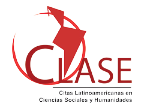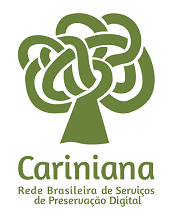Memory, heritage and dissonance: conceptual and epistemological tools for a change of paradigms
DOI:
https://doi.org/10.5433/1981-8920.2021v26n4p24Keywords:
Dissonant Heritage, Monuments, Heritage Policies, Epistemology, Democratization of CultureAbstract
Objectives: To analyze the interactions between the concept of heritage as an object of historical construction and its effects in the context of current social practices. To observe the relationship between Culture, National Identity and Heritage. To discuss the concept of Dissonant Heritage through a case study, the Monument to Ferdinand I Grand Duke of Tuscany, known as The Four Moors.
Methodology: This is a qualitative study of a theoretical nature, therefore bibliographical, which seeks, in an essayistic way, to launch hand of epistemological questions.
Results: The proposal to use the concept of dissonant heritage plays a role of critique of the violence of modernity, and may focus on the elaboration of a cultural memory that confronts the different ethnic, class and gender hierarchization.
Final considerations: The elaboration and application of the concept of dissonant heritage allows heritage to perform the function: of reorganizing memories in a comprehensive way and no longer tied to the idea of unifying national identities cultures.
Downloads
References
ANGIOLINI, F. “I principi e le armi: i Medici granduchi di Toscana e gran maestri dell’ordine di Santo Stefano”. In: FANTONI, M. Il “perfetto” capitano: immagini e realtà (secoli XV-XVII). Roma: Bulzoni, 2001, p. 183-218.
ARENDT, H. Tra passato e futuro. Milano: Garzanti, 1991.
BENJAMIN, W. Angelus Novus: saggi e frammenti. Torino: Einaudi, 1962.
BHABHA, H. K. O local da cultura. Belo Horizonte: UFMG, 2007.
BONO, S. Schiavi: una storia mediterranea (XVI-XIX secolo). Bologna: il Mulino, 2016.
BOURDIEAU, P. A distinção: crítica social e julgamento. São Paulo: Edusp, 2007.
BOURDIEAU, P. O poder simbólico. Rio de Janeiro: Bertrand Brasil, 1998.
CARVALHO, A. Museus e diversidade cultural: da representação aos públicos. Lisboa: Patrimônio cultural, 2016.
ERNST, W. “Radically De-Historicizing the Archive: Decolonising Archival Memory from the Supremacy of Historical Discourse”. In: AA.VV. Decolonising Archives. Ghent: L’Internationale Books, 2016.
FERRO, M. História das colonizações: de conquistas às independências (séculos XIII a XX). São Paulo: Companhia das Letras, 1999.
FIUME, G. Schiavitù mediterranee: corsari, rinnegati e santi di età moderna. Milano: Bruno Mondadori, 2009
GRAHAM B. J.; ASHWORTH, G.; TUNBRIDGE, J. A geography of heritage: power, culture and economy. London, Arnold, 2004.
HALL, S. Da diáspora: identidades e mediações culturais. Belo Horizonte: UFMG, 2011.
HOBSBAWM, E. (org.). A invenção das tradições. Rio de Janeiro: Paz & Terra, 1997.
HOBSBAWM, E. Il trionfo della borghesia (1848-1875). Bari: Laterza, 1979.
JULLIEN, F. L’identità culturale non esiste. Torino: Einaudi, 2018.
LE GOFF, J. “Documento/Monumento”. In: AA.VV.: Enciclopédia Einaudi. Torino: Einaudi, 1978. v. 5, p. 38-48.
LEOPOLD, T. “A proposed code of conduct for war heritage sites”. In: RYAN, C. (ed.). Battlefield Tourism: History, Place and Interpretation. Elsevier, 2007.
MIGNOLO, W. Histórias locais/projetos globais: colonialidade, saberes subalternos e pensamento limiar. Belo Horizonte: UFMG, 2003.
QUIJANO, A. Colonialidad do poder e classificação social. In: SANTOS. B. S; MENESES, M. P. (org). Epistemologias do Sul. São Paulo: Cortez. 2010. p. 73 - 118.
RENAN, E. What is a nation? In: Bhabha. Nation and narration. London: Routledge, 1990. p. 8-22.
SMITH, L. Uses of Heritage. London: Routledge, 2006.
SOARES, I. V. P.; CUREAU, S. Bens culturais e direitos humanos. São Paulo: SESC, 2015.
SPIVAK, G. Pode o subalterno falar? Belo Horizonte: UFMG, 2010.
TURNER, H. Cataloguing culture: legacies of colonialism in museum documentation. Toronto: UBCPress, 2020.
VERDE, S. Le belle arti e i selvaggi: la scoperta dell’altro, la storia dell’arte e l’invenzione del patrimonio culturale. Venezia: Marsilio, 2017.
VOLPE, G. Un patrimonio italiano: beni culturali, paesaggio e cittadini. Novara: UTET, 2016.
Downloads
Published
How to Cite
Issue
Section
License
A revista se reserva o direito de efetuar, nos originais, alterações de ordem normativa, ortográfica e gramatical, com vistas a manter o padrão culto da língua e a credibilidade do veículo. Respeitará, no entanto, o estilo de escrever dos autores. Alterações, correções ou sugestões de ordem conceitual serão encaminhadas aos autores, quando necessário.
O conteúdo dos textos e a citação e uso de imagens submetidas são de inteira responsabilidade dos autores.
Em todas as citações posteriores, deverá ser consignada a fonte original de publicação, no caso a Informação & Informação.












